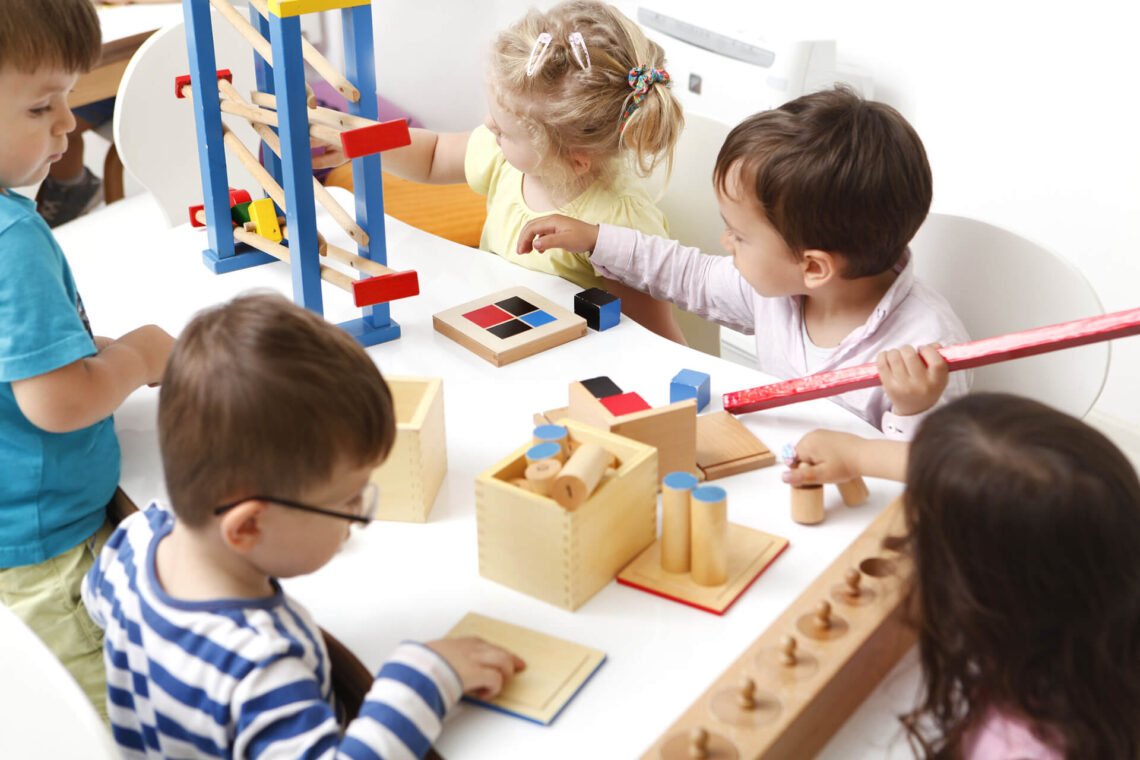When it comes to nurturing a child’s growth, selecting the right materials is essential. Montessori Educational Materials are designed to enhance cognitive, emotional, and social development by fostering independent learning. But how do you choose the right materials that match your child’s needs? In this guide, we’ll walk you through the key factors to consider when selecting Montessori materials for your child’s developmental journey.
Understanding Montessori Educational Principles
Before diving into choosing materials, it’s important to understand the foundational principles of Montessori education. The Montessori method focuses on child-led learning, where children explore and interact with their environment at their own pace. Montessori materials are hands-on tools that encourage self-discovery, independence, and problem-solving skills. Knowing this helps guide your choices based on the developmental needs of your child.
- The Role of Sensory Learning: Montessori materials engage the five senses, allowing children to physically manipulate objects and learn through experience.
- Individualized Learning: Montessori encourages self-paced learning, which is why selecting the right materials is crucial for matching your child’s unique learning abilities.
Age-Appropriate Materials for Developmental Stages
Montessori materials are divided by age groups to ensure they support specific developmental milestones. Selecting age-appropriate materials is critical to ensure they meet your child’s current cognitive and motor skill levels.
- Infants (0-2 years): At this stage, materials that encourage sensory exploration are key. Look for soft, safe objects that stimulate touch, sight, and sound, such as wooden blocks, rattles, or simple puzzles.
- Toddlers (2-3 years): During the toddler years, fine motor skills start to develop. Montessori toys like stacking rings, nesting boxes, and shape sorters help build hand-eye coordination.
- Preschoolers (3-6 years): At this stage, children start to grasp more complex ideas like numbers, letters, and basic math. Montessori math materials, phonetic learning cards, and sensorial activities like color matching are perfect for this age group.
Understanding your child’s developmental stage allows you to choose materials that are neither too challenging nor too simplistic, maintaining their interest while building new skills.
Choosing Materials that Encourage Independence
One of the hallmarks of Montessori education is fostering independence. The best Montessori educational materials are those that allow children to work independently, make choices, and solve problems without constant adult intervention.
- Practical Life Activities: Tools that encourage children to mimic real-life tasks, such as pouring water, buttoning clothes, or sweeping, are perfect for promoting self-sufficiency. These materials teach practical life skills while developing fine motor control.
- Self-Correcting Materials: Look for items that allow children to check their own work. Montessori puzzles, knobbed cylinders, or math manipulatives often have built-in solutions that let the child learn through trial and error without needing help.
By selecting these types of materials, you nurture your child’s ability to become an independent learner.
Focus on Multi-Sensory Learning
Montessori materials are intentionally designed to appeal to multiple senses, making learning more engaging and effective. Choosing tools that engage touch, sight, and hearing helps your child absorb information better.
- Visual Learning: Materials like geometric shapes, color tablets, and number rods encourage visual understanding of concepts such as spatial awareness and counting.
- Tactile Exploration: Items such as sandpaper letters and sensory bins allow children to feel textures, promoting the development of fine motor skills and early literacy.
- Auditory Learning: Montessori bells and sound cylinders help children distinguish between different sounds, enhancing auditory discrimination and focus.
When selecting materials, ensure they offer a variety of sensory experiences to deepen your child’s understanding and retention.
Selecting Materials that Foster Concentration and Focus
A major goal of Montessori education is helping children develop concentration. Montessori materials are designed to capture a child’s attention and encourage sustained focus.
- Puzzles and Building Sets: Open-ended materials such as building blocks or advanced puzzles challenge your child to think critically while maintaining their interest for longer periods.
- Sequencing and Sorting Games: These activities help children organize their thoughts and stay focused as they work to complete a task.
Choosing Montessori materials that hold your child’s attention will help them practice focus, a skill that will benefit them throughout their life.
Prioritize Materials that Encourage Creativity and Imagination
While Montessori education is rooted in structure, there is also a great emphasis on creativity. Selecting materials that allow your child to explore their imagination is just as important as those that promote academic skills.
- Art Supplies: Open-ended art materials like clay, watercolor paints, or collage kits encourage creativity and self-expression.
- Role-Playing Props: Montessori encourages role-playing through toys like play kitchens or dollhouses, which help children develop social skills while using their imagination.
By providing your child with materials that foster creativity, you support both their cognitive development and emotional expression.
Durability and Material Quality
Montessori emphasizes the use of high-quality, natural materials. Wooden toys, for instance, are often preferred over plastic ones because they are not only durable but also offer a more tactile, sensory-rich experience.
- Wood vs. Plastic: Opt for materials made of wood, metal, or fabric. These materials tend to be more durable and provide sensory feedback that enhances learning.
- Eco-Friendly Choices: Many Montessori families prefer materials that are eco-friendly and non-toxic, promoting environmental consciousness from an early age.
When choosing Montessori materials, consider long-lasting, eco-conscious options that align with the Montessori philosophy of respecting the natural world.
Balance Between Guided Learning and Free Play
One of the key tenets of Montessori is balancing guided learning with free exploration. Montessori materials should encourage structured learning while allowing children to explore their creativity and interests.
- Guided Learning: Materials like math manipulatives or language cards are used in a structured way to teach specific concepts, helping children build foundational skills.
- Free Play: Open-ended toys, such as building blocks or Montessori-inspired loose parts, allow children to create their own learning experiences without rules or restrictions.
Selecting a mix of guided and open-ended materials ensures your child develops both academic skills and the ability to think creatively.
Incorporating Cultural and Global Awareness
Montessori education promotes an awareness of different cultures, languages, and traditions. Choosing materials that expose children to global perspectives can enrich their understanding of the world.
- Language Cards: Bilingual or multicultural language cards help children develop language skills while learning about different cultures.
- Geography Puzzles and Maps: Montessori geography materials teach children about continents, countries, and global diversity, helping them build a sense of connection to the world around them.
By incorporating culturally diverse materials, you help your child grow into a more globally aware individual.
Budget Considerations: Quality vs. Quantity
While Montessori materials are known for their quality, they can also be costly. When working within a budget, it’s important to prioritize the types of materials that offer the most developmental benefits.
- Invest in Versatile Materials: Look for Montessori materials that can be used in a variety of ways. For instance, wooden blocks can serve multiple purposes, from stacking to math games.
Balancing your budget with the need for quality will help ensure you choose the best Montessori materials for your child’s development without overspending.
Conclusion
Selecting the right Montessori Educational Materials for your child is a thoughtful process that involves considering their age, developmental needs, and interests. By understanding the Montessori principles and choosing materials that promote independence, focus, creativity, and cultural awareness, you can foster an enriching learning environment for your child. Quality materials that engage the senses and encourage hands-on exploration will support your child’s growth and development for years to come.
Here you can see more articles.





